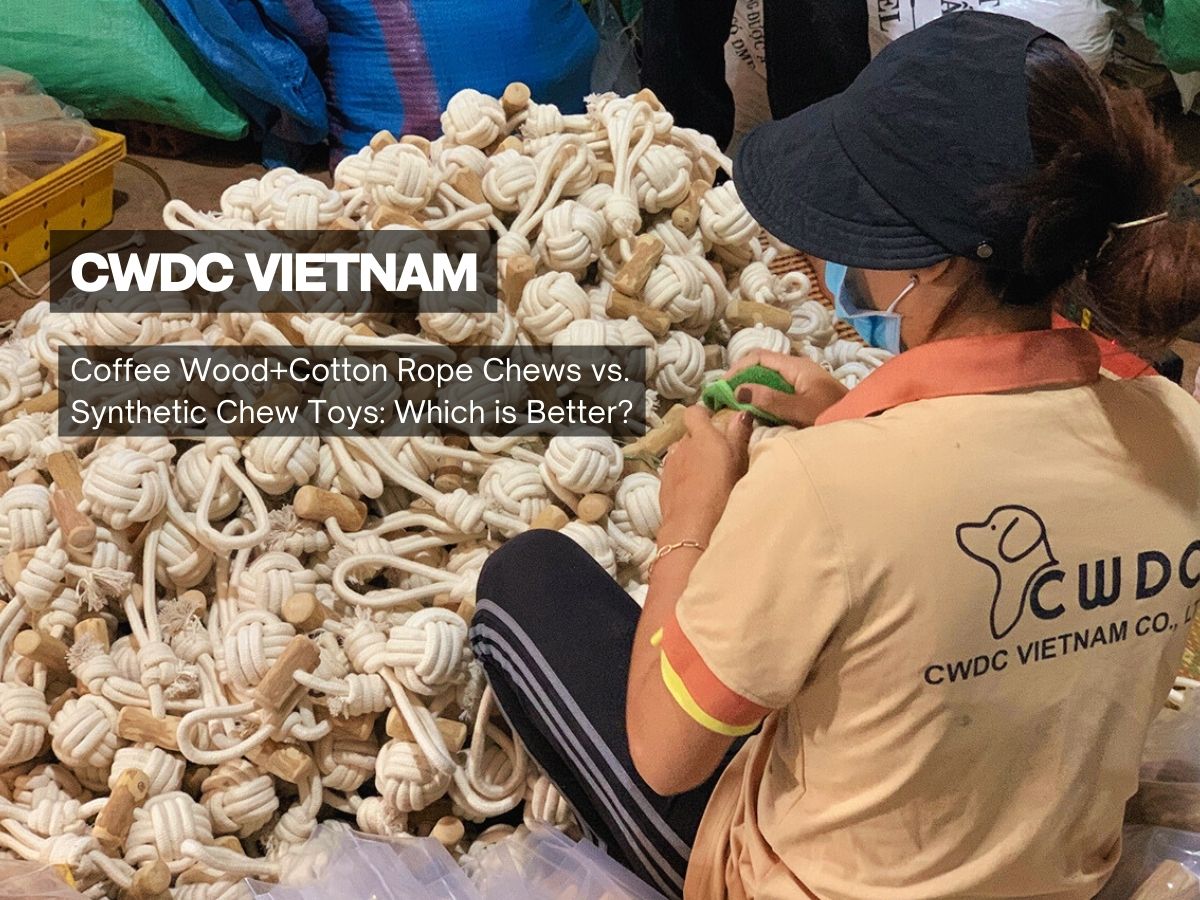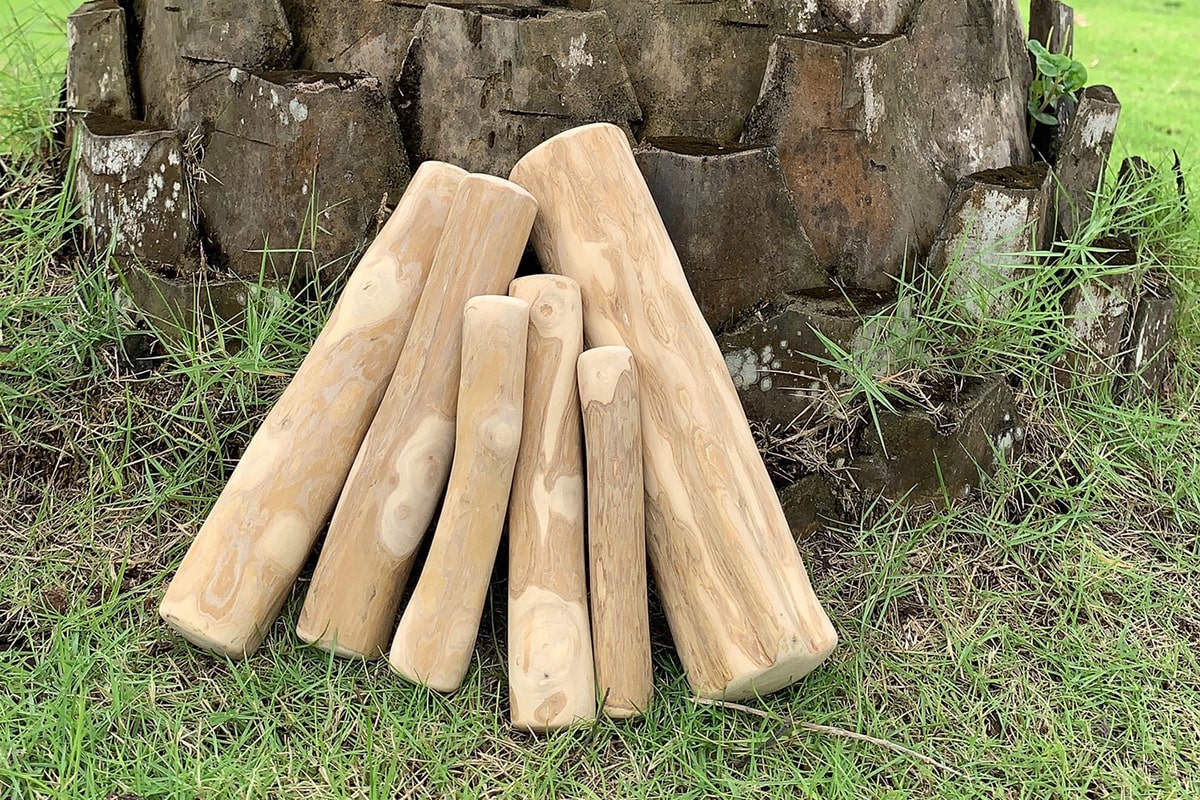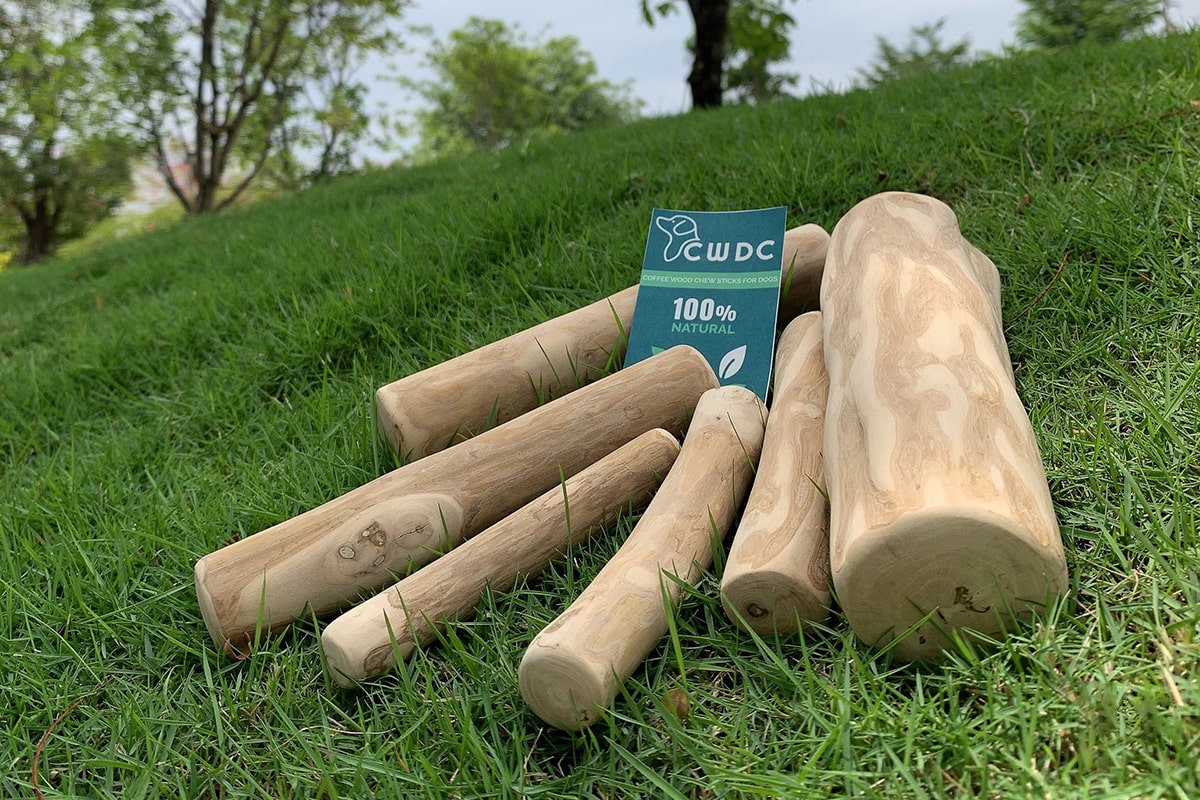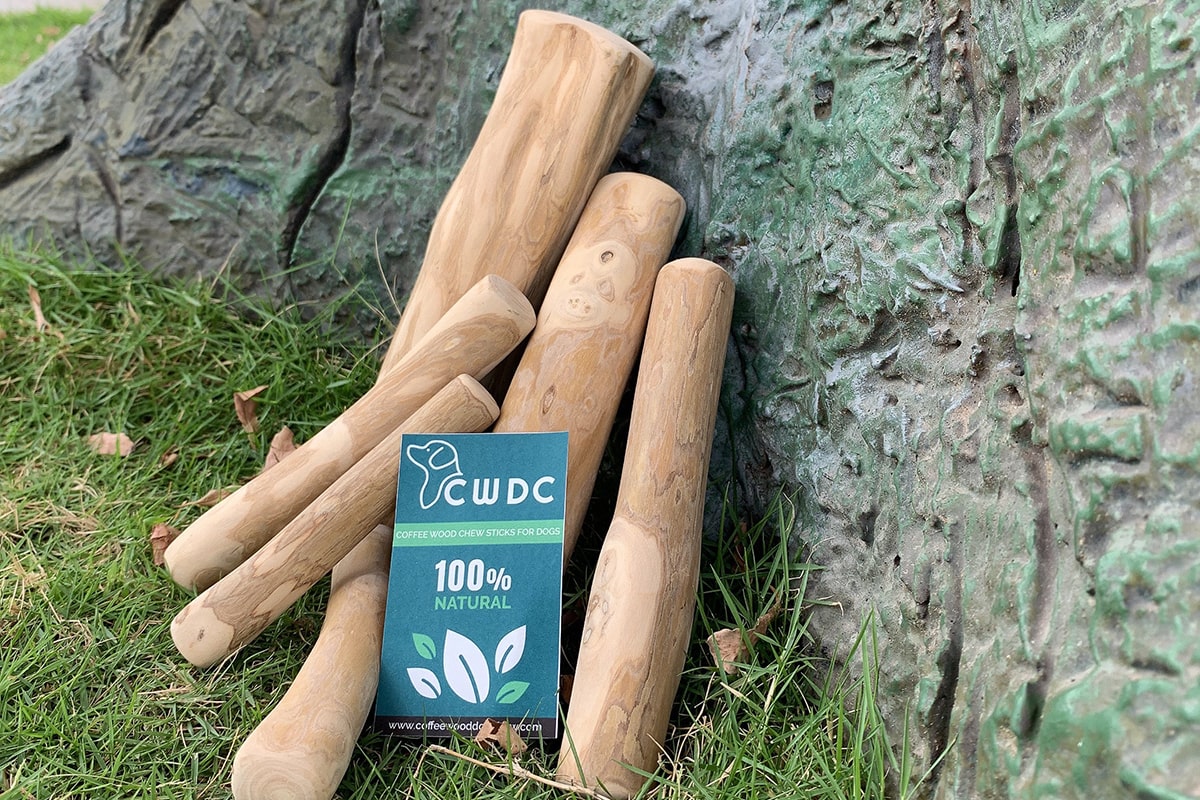Both natural Coffee Wood+Cotton Rope Chews and synthetic chew toys can satisfy a dog’s urge to chew, reduce boredom, and support dental care, but they differ in materials, safety trade-offs, environmental impact, and which dogs they serve best.
Coffee Wood+Cotton Rope offers a natural, biodegradable, low-chemical option that supports sustainable farming (the wood comes from coffee trees over 20 years old that are removed and replaced), while synthetic chew toys offer extreme durability and uniform performance but often carry environmental and ingestion risks. Choose by matching your dog’s chewing style, age, dental history, and your sustainability priorities.
1. Materials & How They’re Made
Coffee Wood+Cotton Rope
- Wood from coffee trees that have reached the end of productive life (≈20+ years) and are replaced with young trees, repurposed rather than newly felled timber.
- Natural cotton rope wrapped/tied to add texture and a flossing action.
- Minimal processing: air-dried, no chemical hardeners, no synthetic coatings
Synthetic Chew Toys
- Made from plastics, nylon, thermoplastic rubber, silicone, polyurethane, or engineered composites.
- Manufactured for consistent shapes, colors, and mechanical properties; may include dyes, stabilizers, or flavor additives.
2. Safety & Dental Health
Dental benefits (both can help):
- Chewing increases saliva, helps mechanically remove soft plaque, and exercises jaw muscles.
Coffee Wood+Cotton Rope – Safety Notes
- Typically wears down into fibrous particles rather than sharp shards, and cotton rope provides a mild flossing action.
- Still requires supervision: accidental swallowing of larger pieces or excessive rope ingestion is possible.
- Safer for pets with sensitive stomachs if truly chemical-free; confirm vendor testing/certification.
- Best for dogs that chew steadily rather than violently tearing.
Synthetic Toys – Safety Notes
- Some very hard nylons or plastics can cause tooth fractures if a dog exerts extreme force.
- Broken synthetic fragments can pose choking or intestinal block risks.
- Chemical additives (flavorings, dyes, plasticizers) may be present, look for non-toxic certifications.
- Often engineered to be non-ingestible, which reduces choking risk but raises consequences if a dog does break them.
Takeaway: No product is risk-free. Match toy hardness/durability to your dog’s bite force and always supervise new toy use.
3. Durability & Dog Types
- Light–Moderate Chewers: Coffee Wood+Cotton Rope is excellent, long-lasting, engaging, and dental-supportive.
- Heavy/Power Chewers: Some synthetic products (heavy-duty rubber, engineered nylons) may last longer. However, extreme chewers can destroy both types; synthetic may last longer but risks dental trauma.
- Puppies / Teething Dogs: Softer cotton rope textures soothe gums; coffee wood is usually safe if sized appropriately. Avoid very hard synthetics for teething puppies.
4. Environmental & Ethical Impact
Coffee Wood+Cotton Rope
- Biodegradable and compostable at end of life (wood fibers, natural cotton).
- Repurposes material from aging coffee farms, provides farmers with additional income and reduces waste.
- Lower landfill and microplastic footprint.
Synthetic Toys
- Largely non-biodegradable; contribute to plastic pollution and microplastic release as they wear.
- Manufacturing often petroleum-based with greater carbon footprint.
- Some brands have recycling programs or use recycled plastics; check brand claims.
5. Cost, Value & Lifecycle
- Upfront cost: Natural chews can be comparable to mid-range synthetics.
- Value: If a natural chew lasts weeks to months for your dog, its environmental and health value may outweigh slightly higher cost. If your dog destroys naturals quickly, cost/benefit may favor ultra-durable synthetics (but factor in dental risk and landfill cost).
6. Practical Use & Care
- Introduce slowly: Let the dog sniff and explore; start supervised 10–15 minute sessions.
- Inspect regularly: Remove/re-place if wood becomes very small, rope frays heavily, or if synthetic develops cracks.
- Cleaning: Rinse natural chews; allow to sun-dry. Synthetic toys often tolerate dishwasher/boiling (follow manufacturer guidance).
- Storage: Keep in a dry, clean place between uses.
7. How To Choose – A Short Decision Guide
- If you prioritize natural, eco-friendly, and dental-supportive chews → choose Coffee Wood+Cotton Rope, size it correctly, supervise, and replace when worn.
- If your dog is an extreme power chewer who quickly destroys natural chews and risks ingesting fragments → consider heavy-duty synthetic specifically rated for power chewers, but consult your vet about tooth safety.
- If your dog has prior dental fractures or a sensitive jaw → ask your vet; softer chews or vet-approved rubber toys may be safer.
8. What to look for when buying
For Coffee Wood+Cotton Rope:
- Source transparency (aging coffee trees, sustainable replacement).
- No chemical treatments, preservatives, or artificial flavors.
- Appropriate sizing and density rating for chewer level.
- Clean, tight rope construction and secure bonding to the wood.
For Synthetics:
- Non-toxic/material safety certifications (BPA-free, food-grade, ASTM where applicable).
- Manufacturer guidance on chew strength and dog weight.
- Evidence of bite-force testing and clear replacement guidelines.
9. FAQs
- Do coffee wood chews splinter? Reputable coffee wood chews generally wear into fibrous pieces; they’re less prone to sharp splinters than many woods, but supervision is still required.
- Are synthetic toys safe? Many are safe when used as intended; risk increases if a dog breaks the toy or chews aggressively.
- Which cleans teeth better? Both help mechanically; cotton rope adds flossing action and coffee wood’s textured surface scrapes plaque.
Conclusion
If your priority is natural materials, sustainability, and gentle dental support, Coffee Wood+Cotton Rope Chews are an excellent, eco-smart choice for many dogs. If your dog is an extreme chewer who destroys naturals quickly, a carefully chosen synthetic chew engineered for heavy use may offer longer life, but weigh that against dental fracture risk and environmental impact. Whatever you choose: size it correctly, supervise early sessions, inspect regularly, and consult your veterinarian if your dog has dental history or extreme chewing behaviors.
Related Posts:
- Are coffee wood chews safe for dogs ? A Comprehensive Look
- Coffee Wood from Vietnam: The Ideal Material for Dog Chews
- Origin and Development of Coffee Wood Dog Chews in the Market
- Java (Coffee) Wood Tree Bird Perch / Artificial Java (Coffee) Tree Plant for Home Decor Indoor or Outdoor Office…
- Coffee Wood Dog Chew - History and Development
- Hemp Rope and Coffee Wood: The Perfect Combination for Natural Dog Chews









